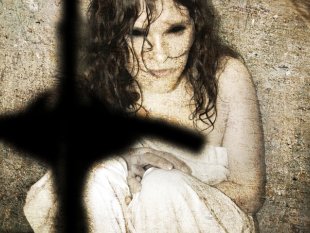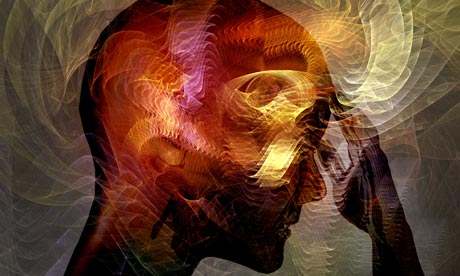The Open Science Framework supports you during any phase of your research. Watch the videos below to see how OSF features can facilitate initial idea generation and organization, developing a project and preserving data, and publicizing your work.
On the belief that one body may be host to two or more personalities
Abstract
The belief in the validity of the multiple personality concept is discussed in this article. Two scaffolding constructions are analyzed: dissociation and repression. As generally employed, these constructions grant no agency to the multiple personality patient. The claim is made that the conduct of interest arises in discourse, usually with the therapist as the discourse partner. In reviewing the history of multiple personality and the writings of current advocates, it becomes clear that contemporary users of the multiple personality disorder diagnosis participate in a subculture with its own set of myths, one of which is the autonomous actions of mental faculties. Of special significance is the readiness to transfigure imaginings into rememberings of child abuse, leading ultimately to the manufacture of persons. The implications for both therapy and theory of regarding the patient as agent in place of the belief that the contranormative conduct is under the control of mentalistic faculties are discussed.
- PMID:
- 7737761
- [PubMed – indexed for MEDLINE]
The interface between multiple personality, spirit mediumship, and hypnosis
Author information
- University of Miami.
Abstract
In this paper I draw parallels between multiple personality, spirit mediumship, and hypnosis from historical, anthropological, and clinical perspectives. I emphasize Milton H. Erickson’s view of multiple personalities as not necessarily pathological but as potential resources. He employed hypnosis to gain access to personalities and to transform their behavior from involuntary to voluntary actions. I discuss similarities between this view and the use of spirits as a resource with mediums. Natural trance therapies in other cultures offer a new perspective for viewing the normalcy or pathology of “other selves.”
- PMID:
- 1543146
- [PubMed – indexed for MEDLINE]
A call for an open, informed study of all aspects of consciousness
- Department of Psychology, Lund University, Lund, Sweden
Science thrives when there is an open, informed discussion of all evidence, and recognition that scientific knowledge is provisional and subject to revision. This attitude is in stark contrast with reaching conclusions based solely on a previous set of beliefs or on the assertions of authority figures. Indeed, the search for knowledge wherever it may lead inspired a group of notable scientists and philosophers to found in 1882 the Society for Psychical Research in London. Its purpose was “to investigate that large body of debatable phenomena… without prejudice or prepossession of any kind, and in the same spirit of exact and unimpassioned inquiry which has enabled Science to solve so many problems.” Some of the areas in consciousness they investigated such as psychological dissociation, hypnosis, and preconscious cognition are now well integrated into mainstream science. That has not been the case with research on phenomena such as purported telepathy or precognition, which some scientists (a clear minority according to the surveys conducted http://en.wikademia.org/Surveys_of_academic_opinion_regarding_parapsychology) dis-miss a priori as pseudoscience or illegitimate. Contrary to the negative impression given by some critics, we would like to stress the following:
Where the imaginal appears real: a positron emission tomography study of auditory hallucinations
Abstract
An auditory hallucination shares with imaginal hearing the property of being self-generated and with real hearing the experience of the stimulus being an external one. To investigate where in the brain an auditory event is “tagged” as originating from the external world, we used positron emission tomography to identify neural sites activated by both real hearing and hallucinations but not by imaginal hearing. Regional cerebral blood flow was measured during hearing, imagining, and hallucinating in eight healthy, highly hypnotizable male subjects prescreened for their ability to hallucinate under hypnosis (hallucinators). Control subjects were six highly hypnotizable male volunteers who lacked the ability to hallucinate under hypnosis (nonhallucinators). A region in the right anterior cingulate (Brodmann area 32) was activated in the group of hallucinators when they heard an auditory stimulus and when they hallucinated hearing it but not when they merely imagined hearing it. The same experimental conditions did not yield this activation in the group of nonhallucinators. Inappropriate activation of the right anterior cingulate may lead self-generated thoughts to be experienced as external, producing spontaneous auditory hallucinations.
- PMID:
- 9465124
- [PubMed – indexed for MEDLINE]
- PMCID:
- PMC19222
The girl who makes miracles
Religion and Health: The more we know the more we need to know
Allan Kardec and the Development of a Research Programme in Psychic Experiences
A paper by Professor Alexander Moreida-Almeida presented at the Parapsychological Association & The Society for Psychical Research Convention 2008. Winchester – UK. Proceedings of Presented Papers v.51:327-332, 2008
Clairvoyant Diagnosis
This experiment assesses the accuracy of a non-medically trained Spiritualist medium in her ability to identify a medically diagnosed disease. The case is also illustrative of the discovery of one earthbound attached spirit and one discarnate entity that uses energy for its own survival that is transmitted by a living human. The dynamic relationship between the disease and the discarnate entities is implied.
Click on the image for a transcription.
Demonic attributions in nondelusional disorders
Abstract
 OBJECTIVE:
OBJECTIVE:
Belief in demonic influence has repeatedly been described as a delusion in schizophrenic patients. The goal of this explorative study was to examine the frequency, as well as the psychodynamic and social functions of such beliefs in a sample of nondelusional patients.
METHOD:
The sample consisted of 343 psychiatric outpatients who described themselves as religious. In semistructured interviews they were asked to give their view of demonic causality of their illness.
RESULTS:
A high prevalence of such beliefs was not only found in schizophrenic patients (56%) but also in the following groups of nondelusional patients: affective disorders (29%), anxiety disorders (48%), personality disorders (37%) and adjustment disorders (23%). Belief in demonic oppression tended to be associated with lower educational level and rural origin, and was significantly influenced by church affiliation.
CONCLUSIONS:
Beliefs in possession or demonic influence are not confined to delusional disorders and should not be qualified as a mere delusion. Rather they have to be interpreted against the cultural and religious background which is shaping causal models of mental distress in the individual.
- PMID:
- 10494064
- [PubMed – indexed for MEDLINE]


 Etzel Cardeña
Etzel Cardeña
